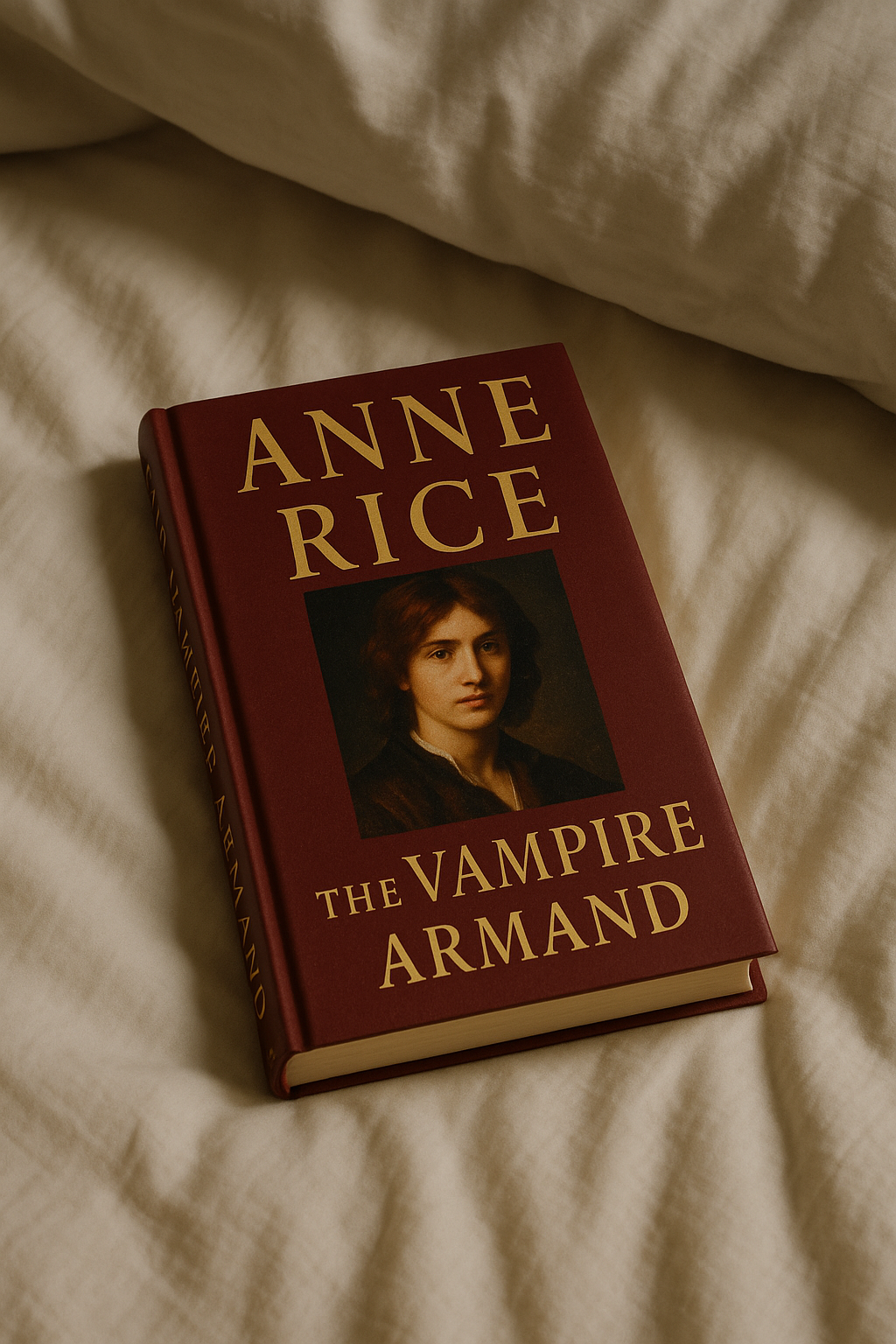
Anne Rice’s The Vampire Armand (1998) takes us back into the world of The Vampire Chronicles through one of its most mysterious and tormented figures. After years of existing in the shadows of Lestat and Louis, Armand finally tells his story—a tale of beauty, faith, betrayal, and eternal longing.
El vampiro Armand (1998) de Anne Rice nos devuelve al mundo de Las Crónicas Vampíricas a través de una de sus figuras más misteriosas y atormentadas. Después de años de permanecer en la sombra de Lestat y Louis, Armand finalmente cuenta su historia: un relato de belleza, fe, traición y deseo eterno.
📖 Story Summary
The novel opens with Armand awakening from his long slumber, ready to share the truth of his past. We follow him from his childhood in Renaissance Venice, where he is taken from his home by slavers, to his transformation into a vampire by Marius—the wise and cultured immortal who becomes both his mentor and his captor. Through centuries of loss and faith, Armand searches for meaning in a world that no longer knows God.
La novela comienza con Armand despertando de su largo letargo, dispuesto a revelar la verdad de su pasado. Lo seguimos desde su infancia en la Venecia del Renacimiento, donde es arrebatado de su hogar por traficantes, hasta su transformación en vampiro a manos de Marius—el sabio e ilustrado inmortal que se convierte en su mentor y también en su carcelero. A través de siglos de pérdidas y fe, Armand busca un sentido en un mundo que ya no conoce a Dios.
🌙 Themes and Impressions
What sets this novel apart is its atmosphere of tragic beauty. Rice crafts Armand as both angelic and damned, torn between his sensual nature and his desire for purity. His story becomes a meditation on art, love, and the eternal tension between body and soul. The Venetian setting is painted with such detail that you can almost smell the incense and candle wax of its cathedrals.
Lo que distingue a esta novela es su atmósfera de belleza trágica. Rice construye a Armand como una figura tanto angelical como condenada, dividida entre su naturaleza sensual y su anhelo de pureza. Su historia se convierte en una meditación sobre el arte, el amor y la eterna tensión entre el cuerpo y el alma. El escenario veneciano está pintado con tal detalle que casi se puede oler el incienso y la cera de las velas de sus catedrales.
Armand’s voice is more poetic than Lestat’s, more introspective, and often heartbreaking. His faith is both his salvation and his curse, and through him, Rice explores how immortality can magnify guilt and loneliness. It’s a story that feels intimate and universal at once—one of her most emotional works.
La voz de Armand es más poética que la de Lestat, más introspectiva y a menudo desgarradora. Su fe es a la vez su salvación y su condena, y a través de él, Rice explora cómo la inmortalidad puede amplificar la culpa y la soledad. Es una historia que se siente íntima y universal al mismo tiempo—una de las obras más emotivas de la autora.
🖤 Final Thoughts
The Vampire Armand is a haunting portrait of beauty and damnation. It slows down the pace of the saga to focus on emotion, memory, and faith. For readers who love gothic elegance and moral complexity, this novel is one of the jewels of The Vampire Chronicles.
El vampiro Armand es un retrato inquietante de la belleza y la condena. Ralentiza el ritmo de la saga para centrarse en la emoción, la memoria y la fe. Para los lectores que aman la elegancia gótica y la complejidad moral, esta novela es una de las joyas de Las Crónicas Vampíricas.
Do you see Armand as a victim of his faith—or as someone who chose his own damnation?
¿Ves a Armand como una víctima de su fe o como alguien que eligió su propia condena?